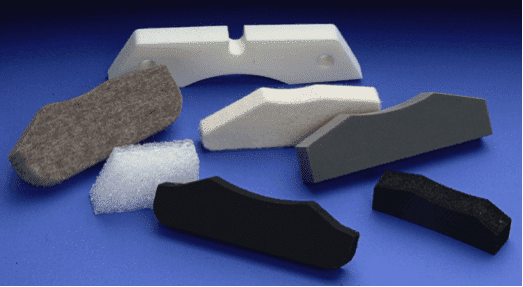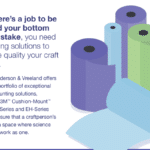Maximizing Doctor Blade and End Seal Performance to Increase Productivity
In his famous historical play Richard III, Shakespeare’s title character utters the famous line, A horse, a horse, my kingdom for a horse!
This simple line has come to exemplify any scenario where the lack of an item has potentially disastrous consequences. In today’s popular vernacular, one could paraphrase in a number of ways:
Cell signal, my cell signal, my contact list for a cell signal!
Toilet paper, my toilet paper, my iPhone for some toilet paper!
Well, you get the idea – sometimes the most seemingly unimportant things take on whole new importance when compared to their absence (or underperformance). For today’s label and packaging printer, this can often be said about a variety of pressroom consumables and technologies.
Across the industry, huge investments are being made every week in new presses, large building expansions, and the list goes on. Millions of dollars are being spent every month to grow and advance our cumulative industry capabilities, while the simplest items used to operate those investments often go ignored.
There are lots of choices!
Let’s focus, just for a moment, on a couple of pressroom consumables which are near and dear to my heart – doctor blades and end seals. These common items are absolutely critical to the effective, profitable operation of almost every modern flexo press, yet are so often sourced strictly based on cost. Many operators don’t realize the broad range of choices available to make these components. These are not just parts that have to be replaced, but complementary pieces of the overall press configuration that help provide maximum productivity and cost-efficiency.
Let’s start with doctor blades (we’ll skip containment blades for now) – there are a number of options to consider. Certainly, your press is designed to use a blade that’s a certain width and length, but that’s just the beginning. Tip style, gauge (or thickness), material type and quality, special coatings, and treatments, roll or precut – there are many variables to consider.
Tip styles range across radius (rounded); bevel (sharp, and with a number of angles and bevel lengths); stepped (often referred to as Lamella) in single, double, or modified versions; square; and others unique to their manufacturers. A gauge can commonly range from .006” to .020”, while material types include a variety of carbon steel, alloy steel, stainless steel, plastic, and composite options. The list of special coatings could fill a page by itself, with offerings designed to help with wear, corrosion, friction, and vibration resistance. After you’ve specified your choices in all of these areas, then you must decide whether to cut your own blades from a roll or stock them precut to length for each press.
 On to end seals – again, the options are many, depending upon a variety of factors including run speed, ink type, dead band width, chamber design, length of job, and internal practices. Material types include foam (multiple choices), felt (many grades), rubber (compound and molding temp makes a difference), plastic, and any number of combinations thereof.
On to end seals – again, the options are many, depending upon a variety of factors including run speed, ink type, dead band width, chamber design, length of job, and internal practices. Material types include foam (multiple choices), felt (many grades), rubber (compound and molding temp makes a difference), plastic, and any number of combinations thereof.
So, where do you start?
Let’s look at a very common scenario, one often encountered in a variety of pressrooms across the flexo industry. A typical chamber setup uses die-cut open-cell foam end seals and .008” thick carbon steel blades with a radius tip, running water-based inks on paper at 600 FPM (feet per minute). The operators replace both seals and blades when setting up for a new job, and the purchasing department is happy since both items are bought at a relatively low cost.
To read the balance of Ed’s thoughts on doctor blades and end seals, refer to his article published in the June 2015 issue of Flexo magazine.




